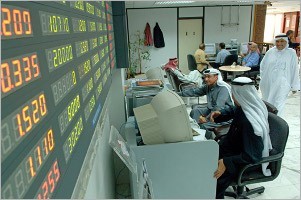Trade across the Middle East and North Africa (Mena) region is expected to grow by 131 per cent by 2026, faster than the global growth over the same period (86 per cent), according to a new report.
HSBC in its latest 'Trade Connections Report' said while hydrocarbons remained a key trading focus for the region, the increase in importance of iron and steel underlines the pace of industrial growth in Mena region.
Egypt
Egypt is predicted to be the region's fastest growing exporter and importer in the medium to long term, said the global banking giant in its report.
Trade growth in Egypt will expand by 167.4 per cent to 2026 with flat-rolled iron and steel as its largest and fastest growing export sector (21.7 per cent over the next five years).
Saudi
Commenting on the Gulf region, the HSBC report said Saudi's trade forecast is set to grow by 107.12 per cent to 2026. Like many of the Mena countries, Saudi fared comparatively well throughout 2011 despite the global economic downturn and the euro zone debt crisis.
The kingdom will see its export trade jump by 5.52pc over the next five years while imports will increase by 6.99pc, fuelled by expansion of its own infrastructures.
UAE
Trade Forecast data also showed that the UAE companies expect to increase trade activity by 5.52pc annually over the next 15 years, with overall trade growth expected to now grow by 124.03 per cent to 2026.
According to the report, the growth is expected to be fuelled by the emergence of trade in electrical apparatus, jewellery and aircraft as well as oil and oil-derived products.
Qatar
Qatar's trade is forecast to grow by 150.74 per cent to 2026 and substantially faster than the world average throughout the next 15 years.
"This is due to its strong economic position compared with other countries in the past four years. Qatar fared well throughout 2011 despite the global economic downturn and the euro zone debt crisis. In 2012, the country's general outlook remains positive," the report said.
Long-term economic potential
Tim Reid, the regional head of Commercial Banking, HSBC Bank Middle East, said: "There is no denying the challenges the region has faced and continue to face this year. Nevertheless, today's data very much supports our belief in the long-term economic potential of the region."
"As the region's leading international trade bank, we know that trade lies at the core of ensuring international economic recovery, particularly as businesses explore new trade corridors and take advantage of the new global opportunities," Reid said.
"The Middle East as a whole remains an ideal hub for North to South, East to West and intra-regional trade flows. Businesses should continue to feel confident about the future," he said.
Less reliant on Europe
The quarterly forecast shows that not only will the Mena region grow its trade at a substantially faster rate than the rest of the world, but that international business are becoming less reliant on Europe and the US for trade links. The data predicts that the region's current largest trading partners for 2012 will be the US, China and India, reflecting the dominance of oil, gas and hydrocarbons to the region.
Importance of diversification?
"While two thirds of the world's discovered crude oil reserves are in the Mena region, we shouldn't just see the region as a pure hydrocarbon story when we look at long term trade. Diversification is not just apparent, but predicted to grow in importance," Reid said.






